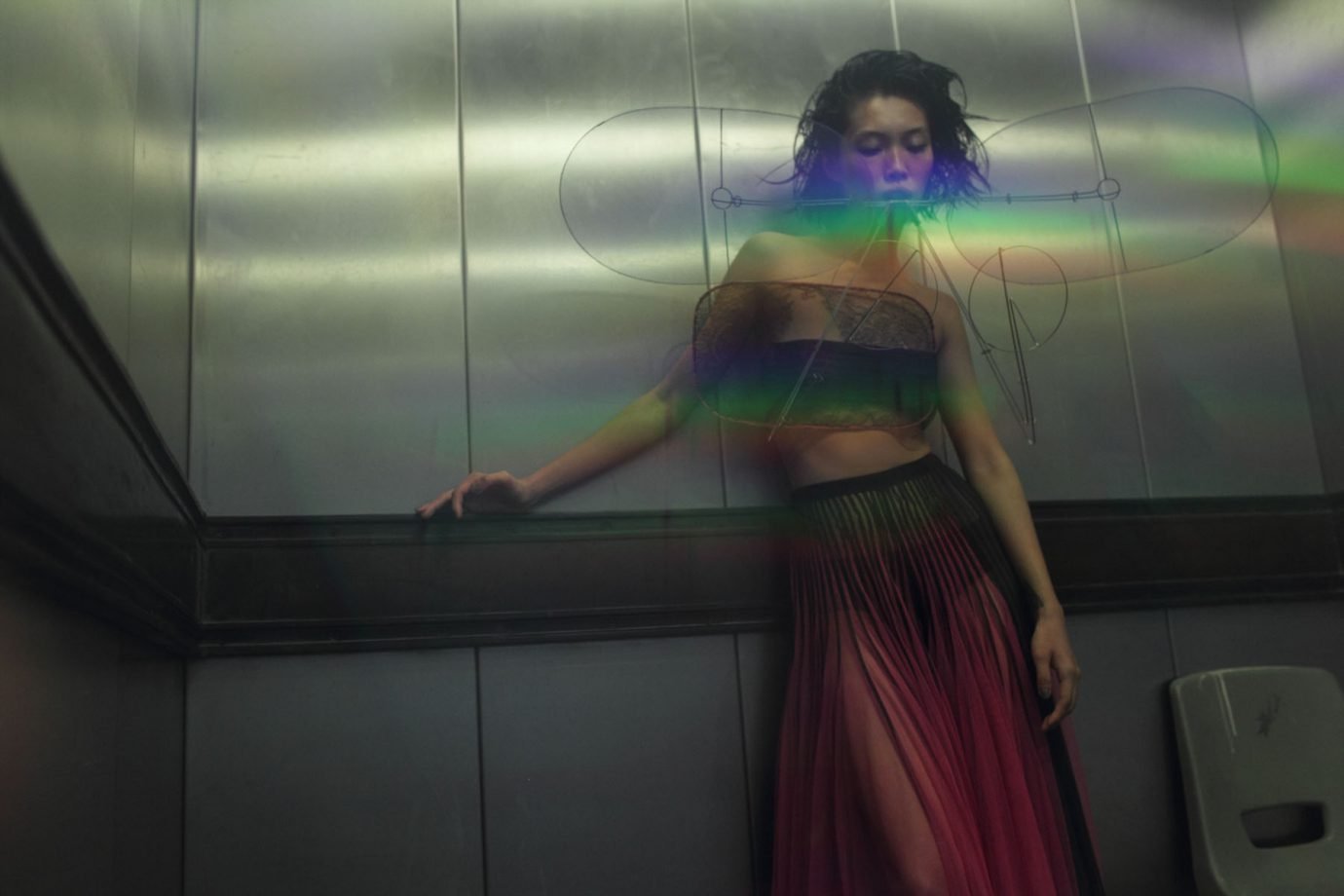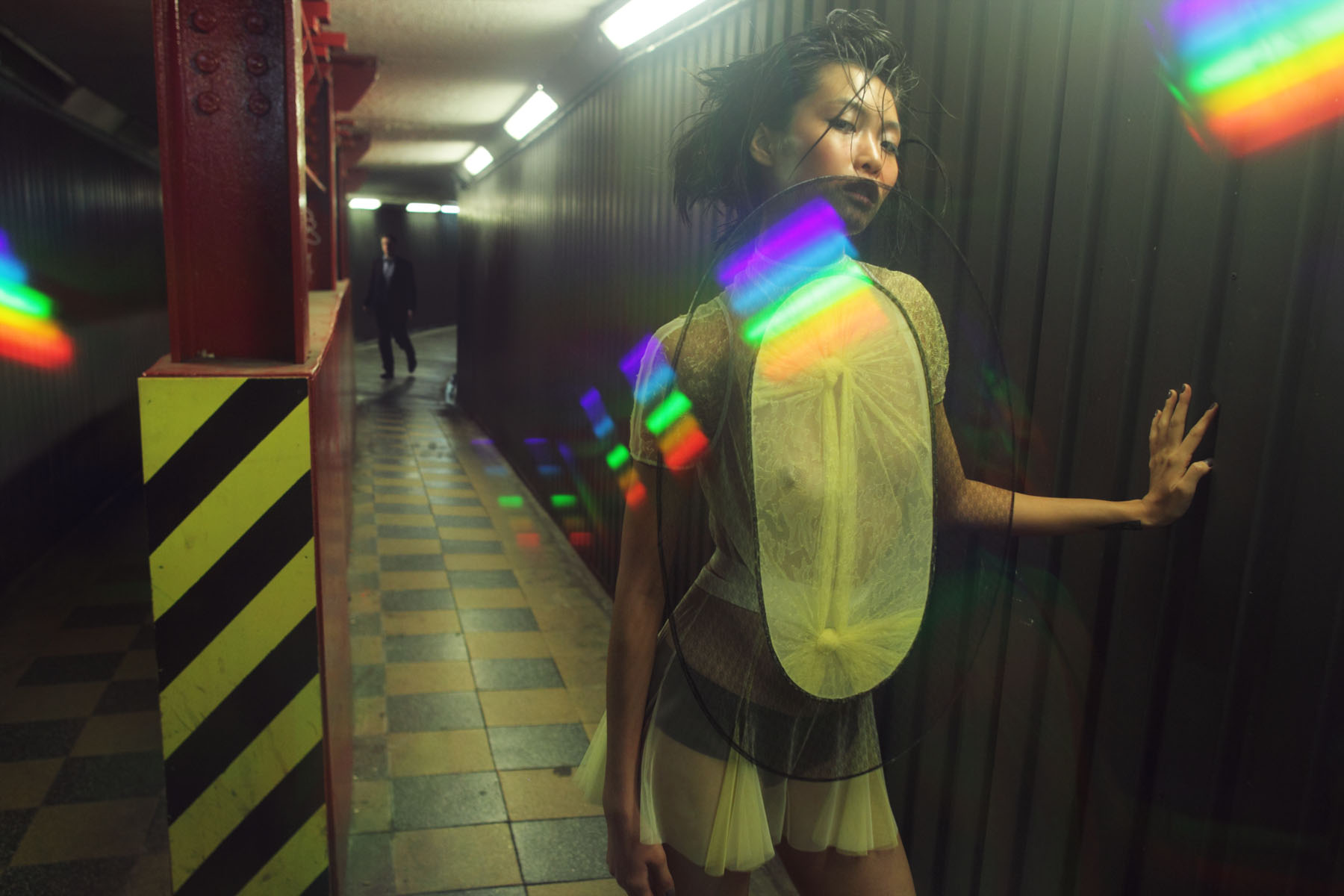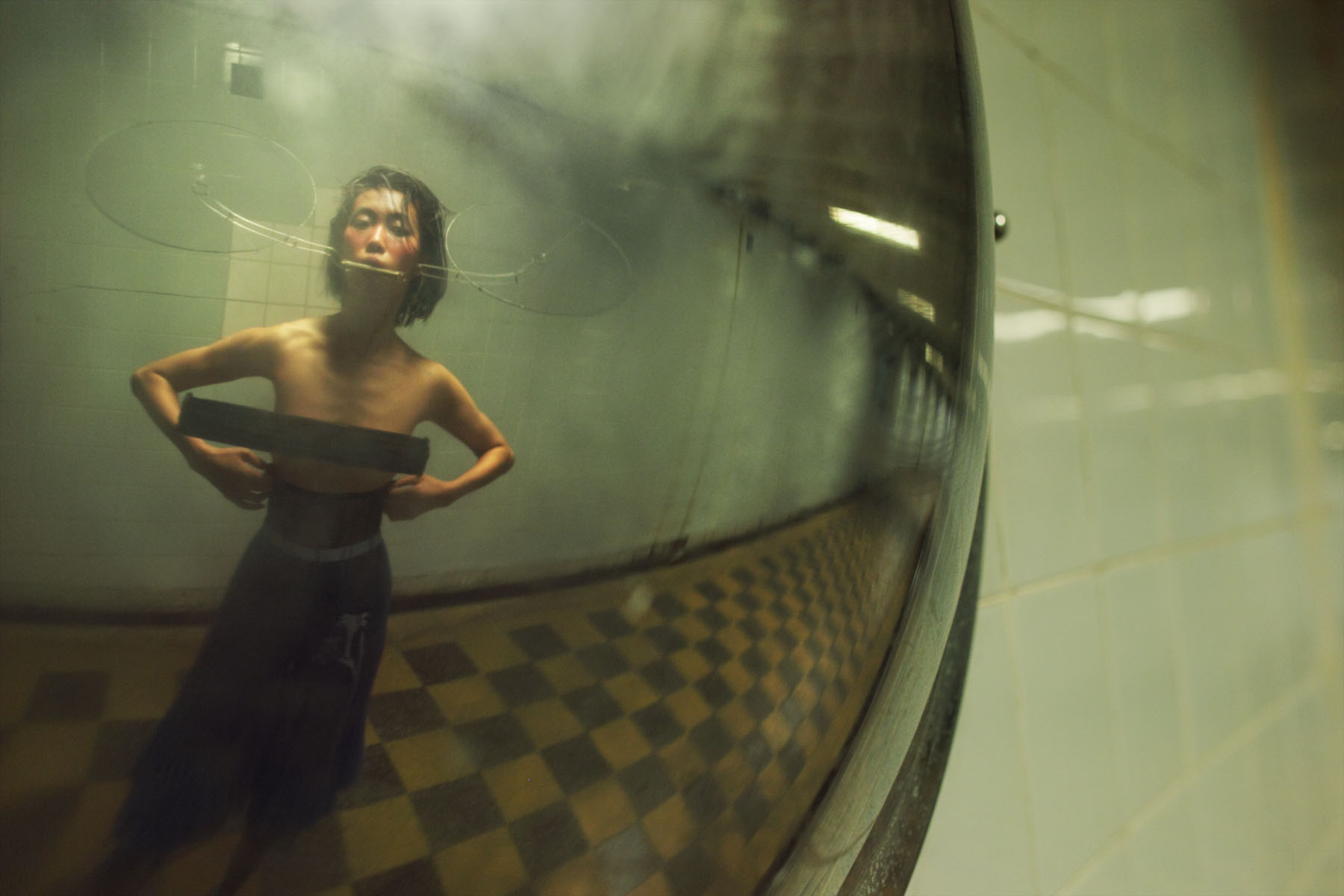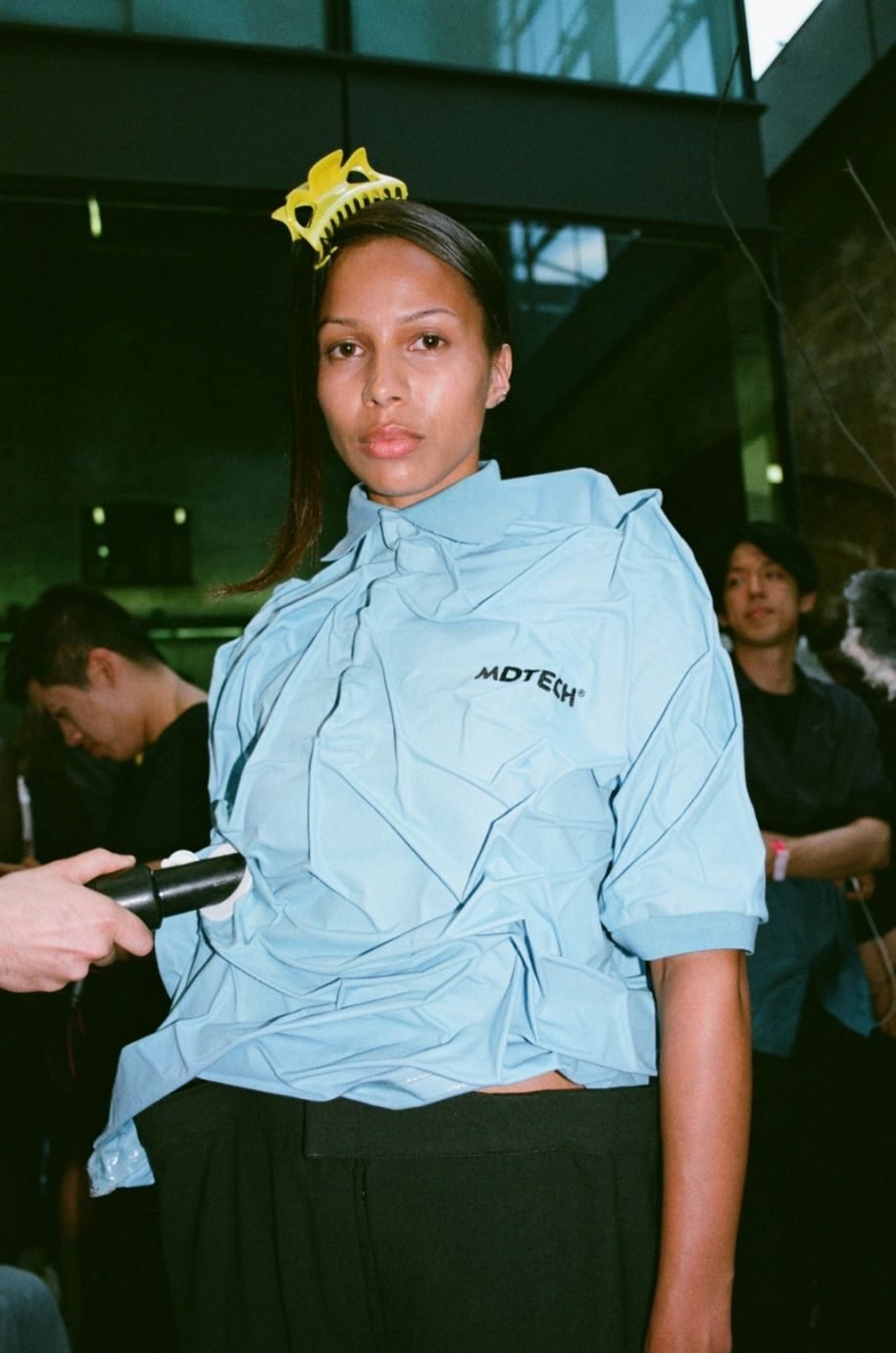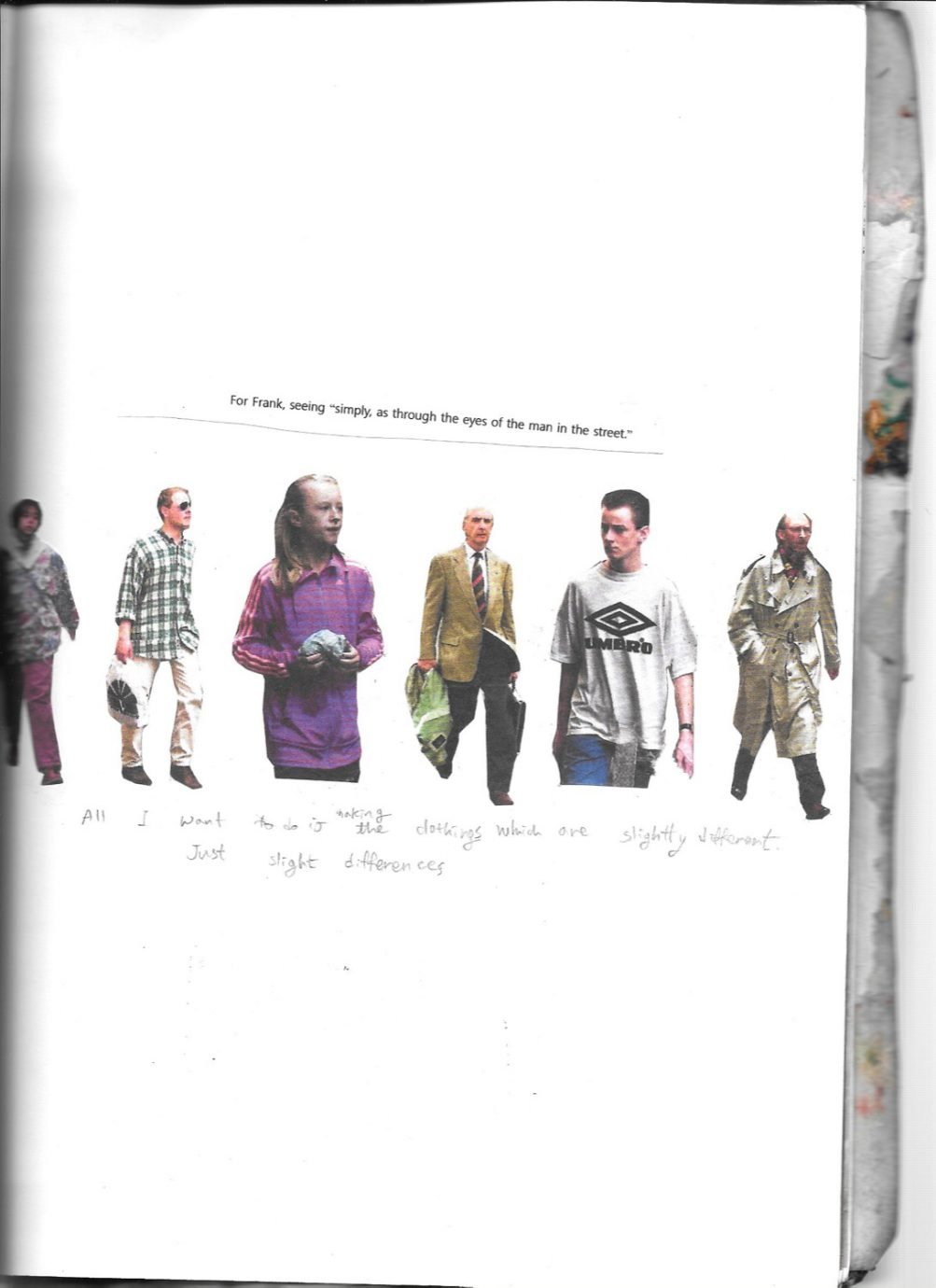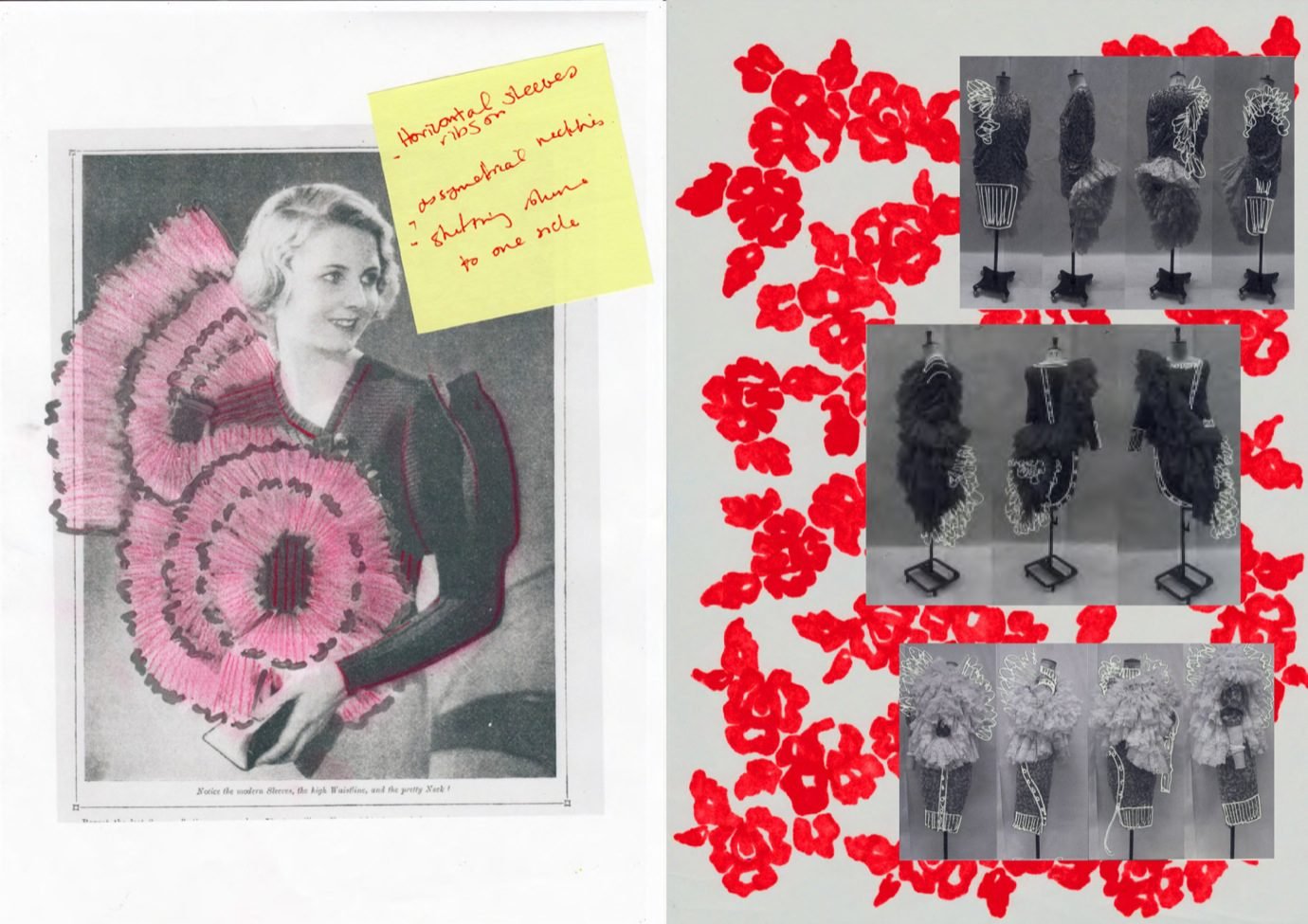Grechka did not have one muse in mind when he created his collection, rather, he focused on the mood of his ideal woman. “She is beautiful, egotistical and brave,” he says, and explains that his designs are for “a modern, fragile but dangerous woman whose perception of gender is blurred.” Though Grechka wishes for gender to remain in flux here, he still tackles some issues that oppose female sexual freedom in his designs, the bold black line across the chest of the model, as seen in some scenes, being undeniably striking in this context. “The censorship element came out spontaneously,” he elucidates. “It is to represent the nudity, the appropriateness, of the female in social media.”
Having spoken before about his interest in the contradiction of a feminine look against masculine behaviour, Sergey explains that he continued this theme in his designs. “I wanted each look to have an abstract element to it, to balance out the feminine colours and silhouettes. All the dresses are transparent, so the underwear becomes another important graphic element adding to the look.” He tells us that sexuality and violence have also been great influencers here. “Dark experiences and events in the past few years had a huge influence on my work as well; it drove my interest in violence, cannibalism, ripping flesh, and rituals of Bacchanalia, which I find extremely beautiful and moving.”
“I’M REALLY HAPPY I COULD DEDICATE MY FINAL COLLECTION TO SOMETHING SPECIAL AND PERSONAL, AS I DIDN’T HAVE TO WORRY ABOUT MARKETING AND PRICING.”

